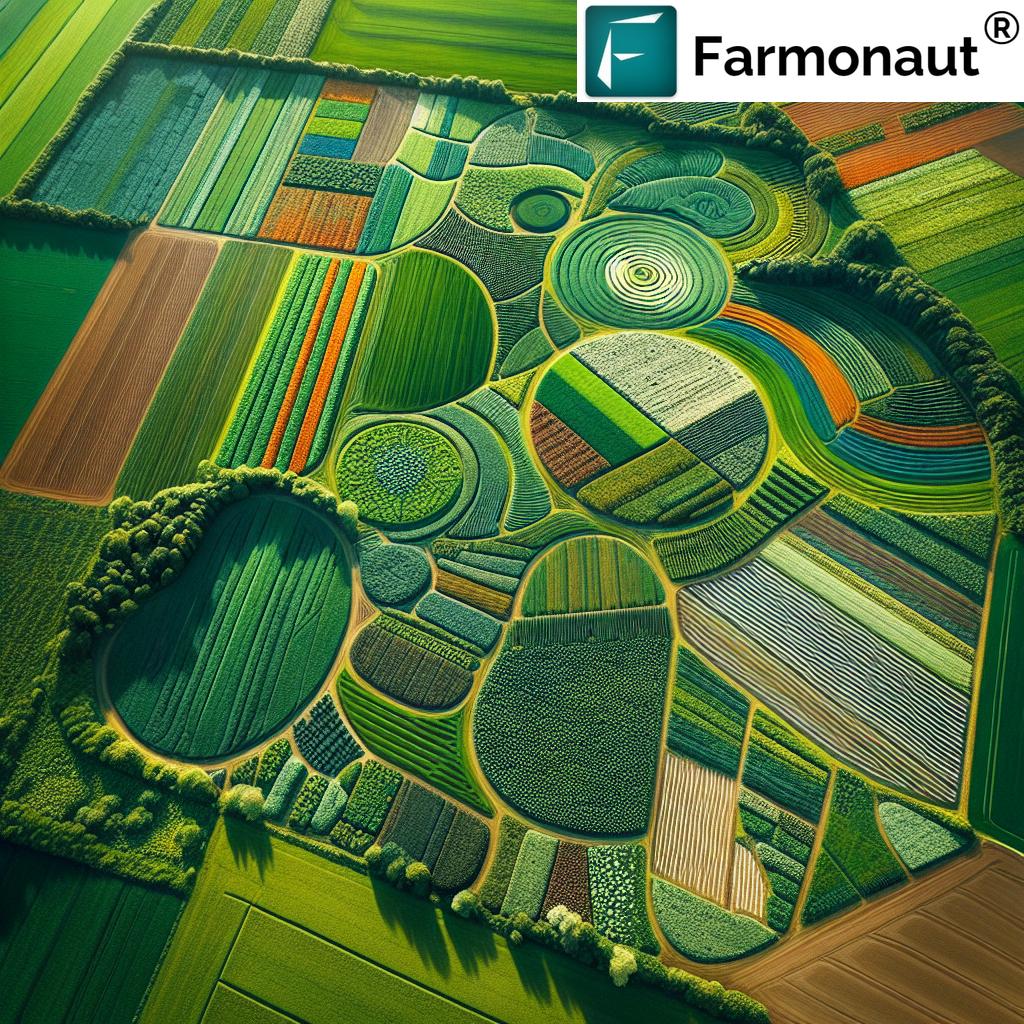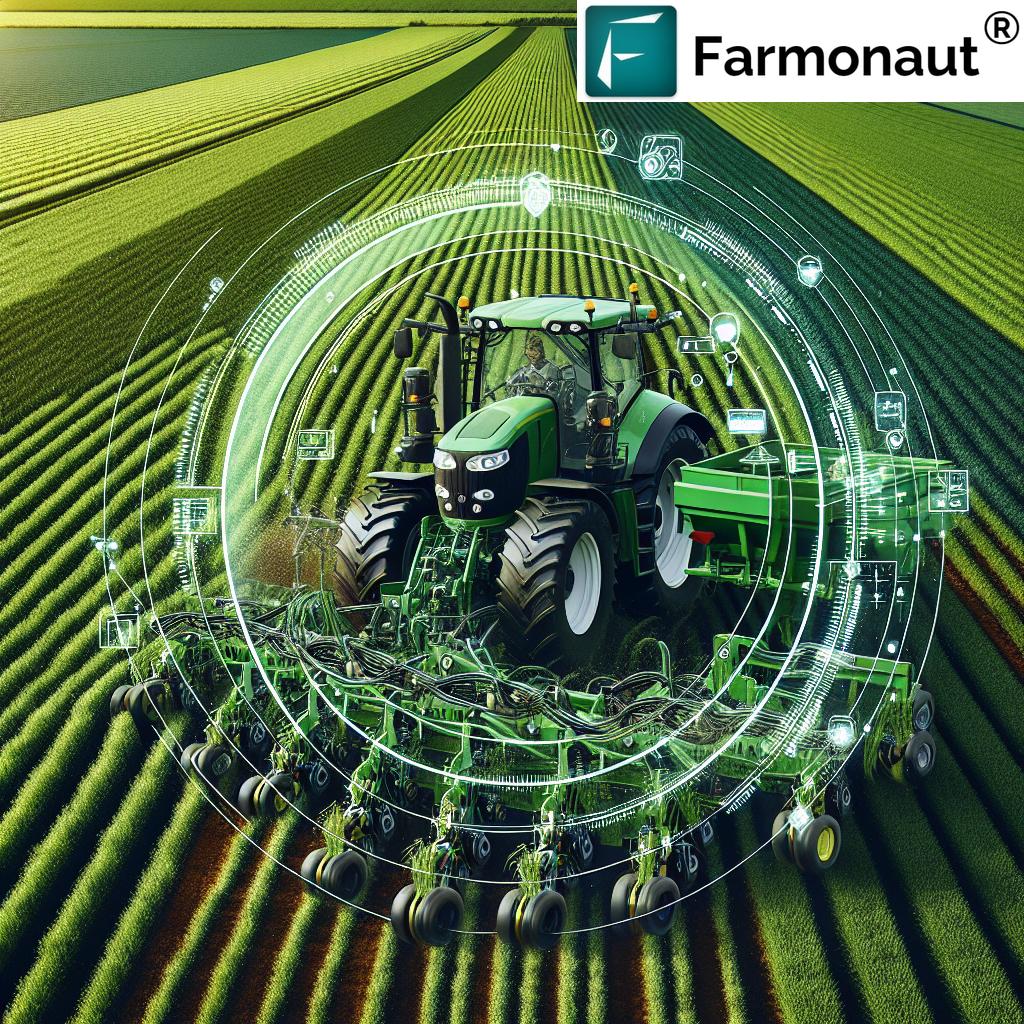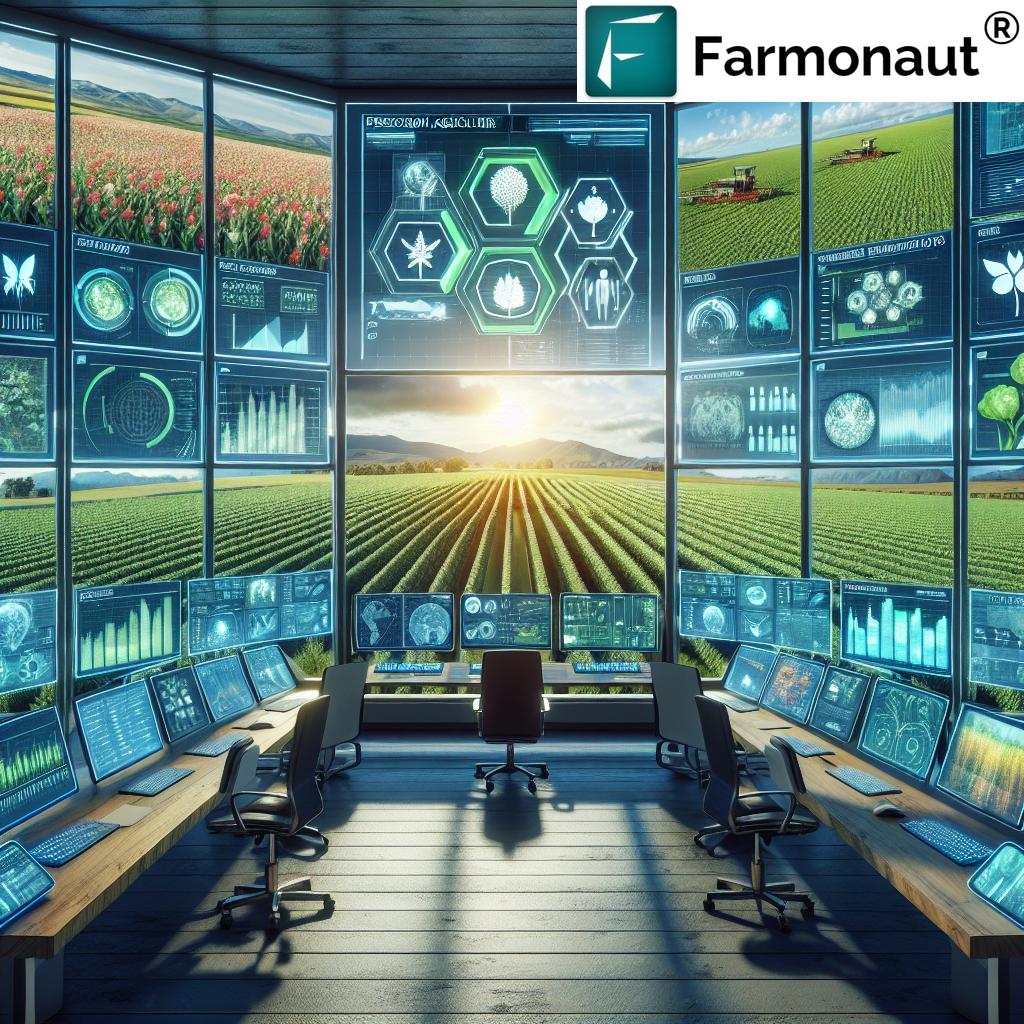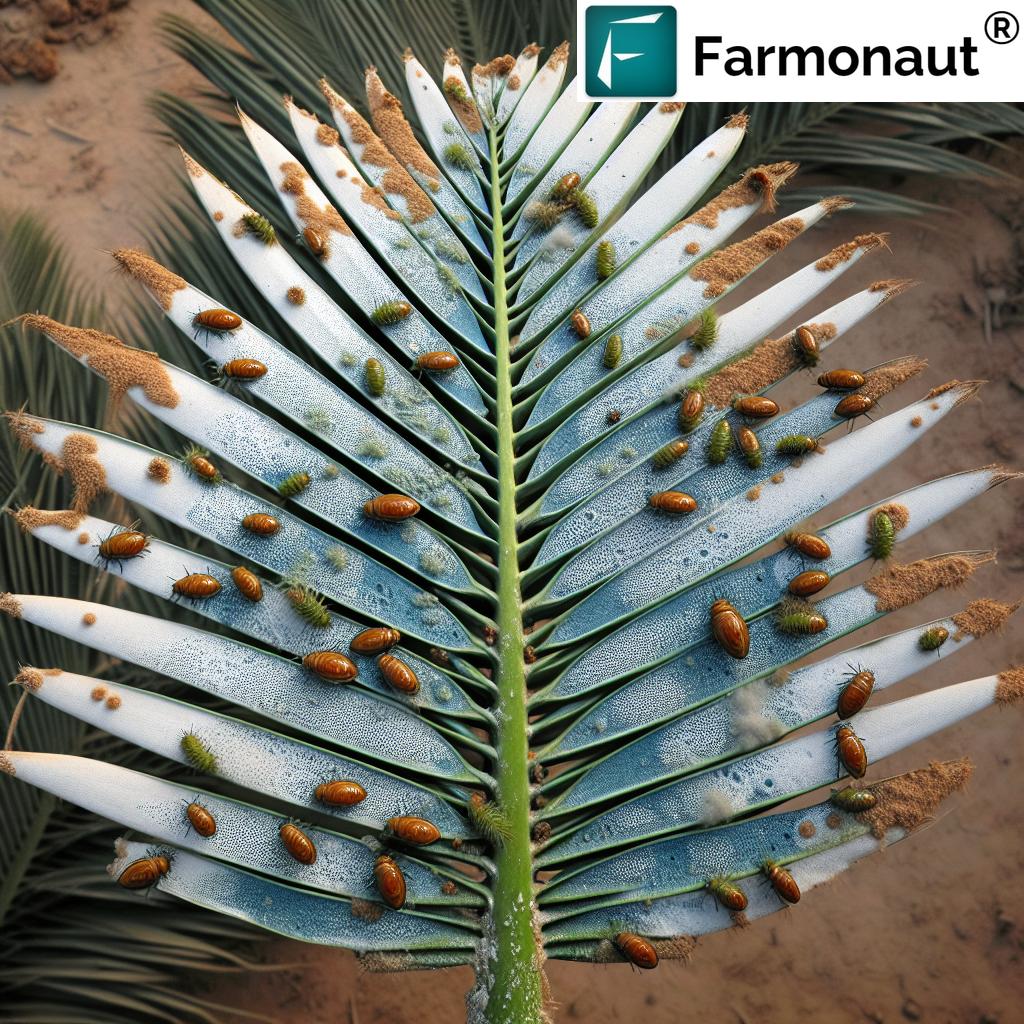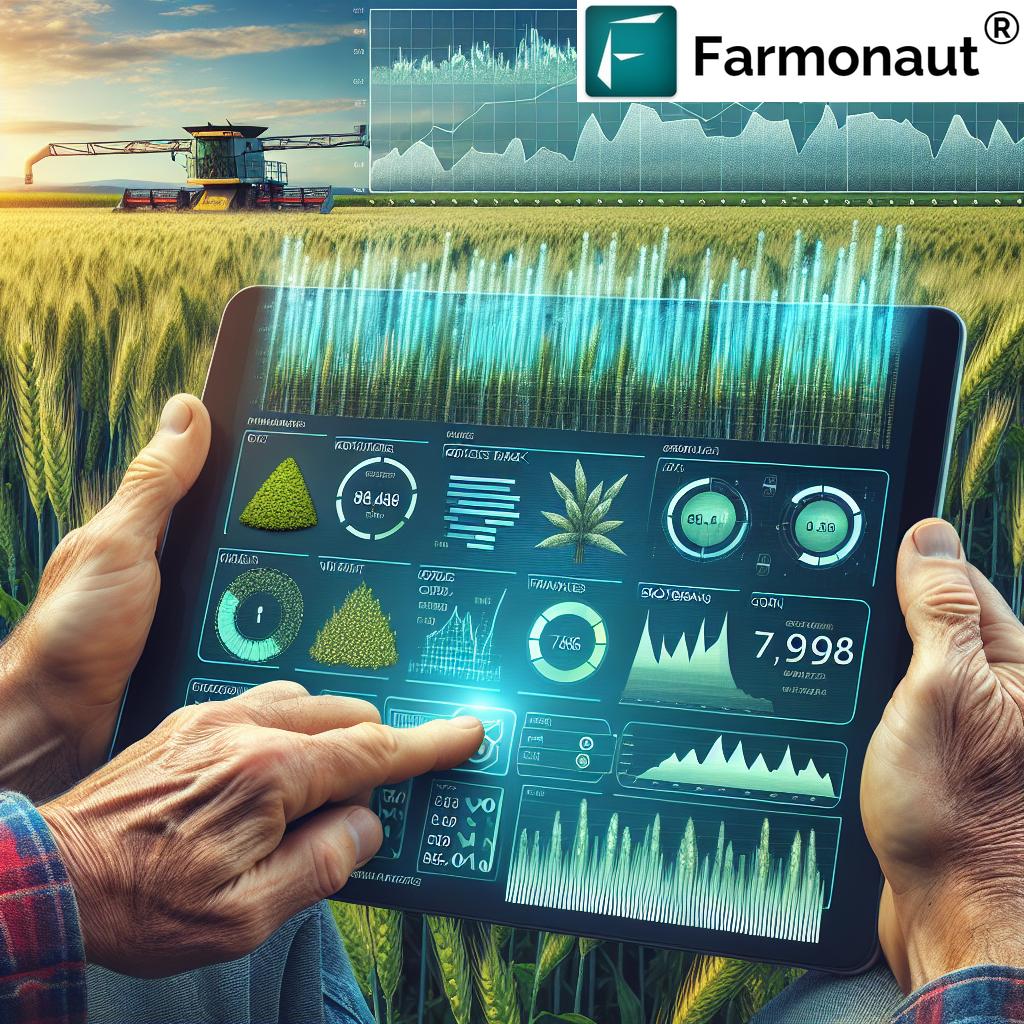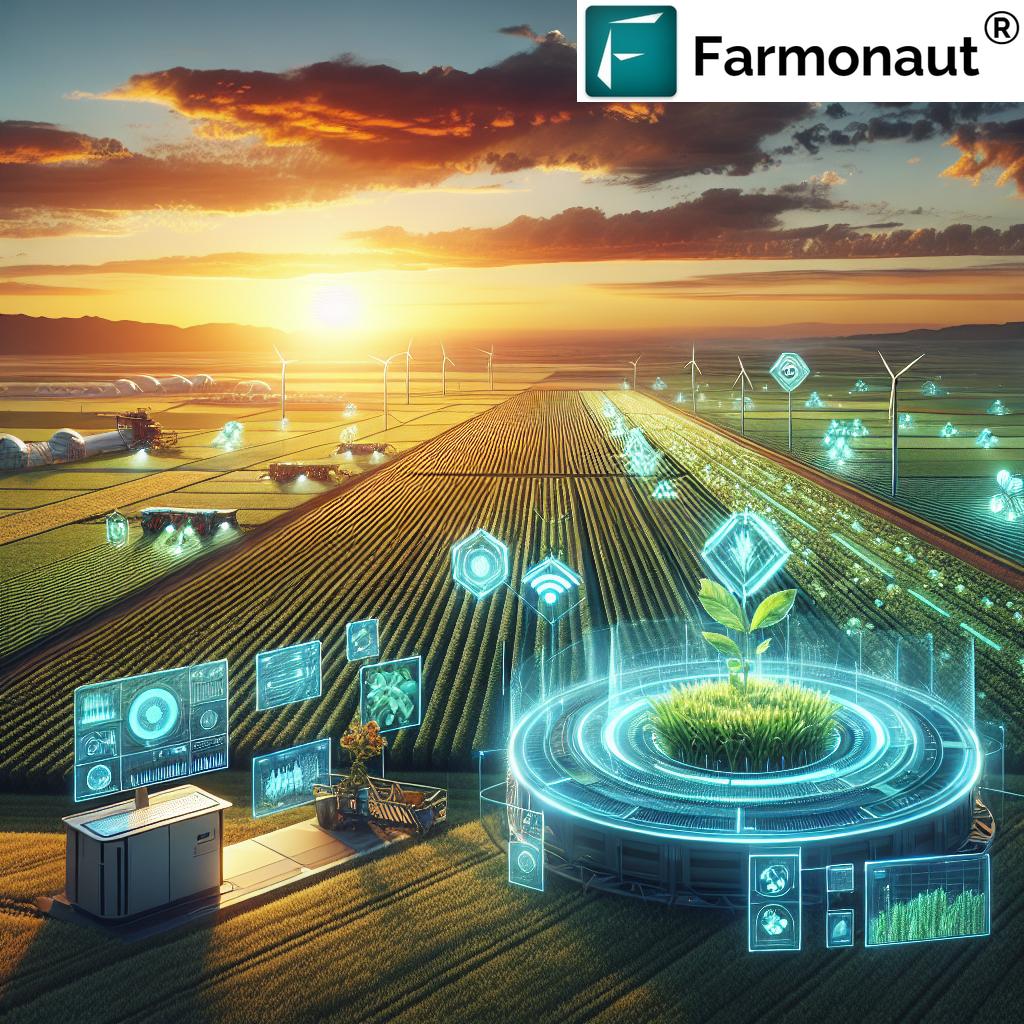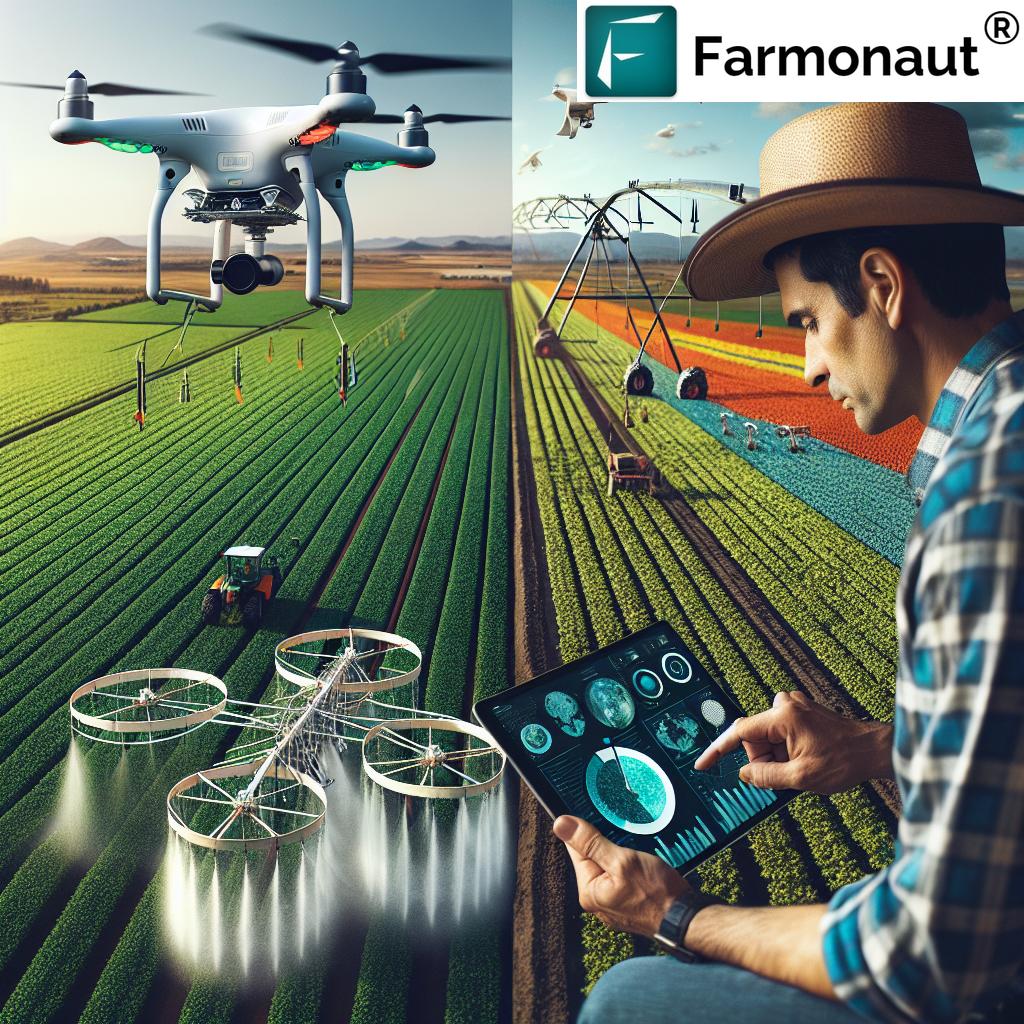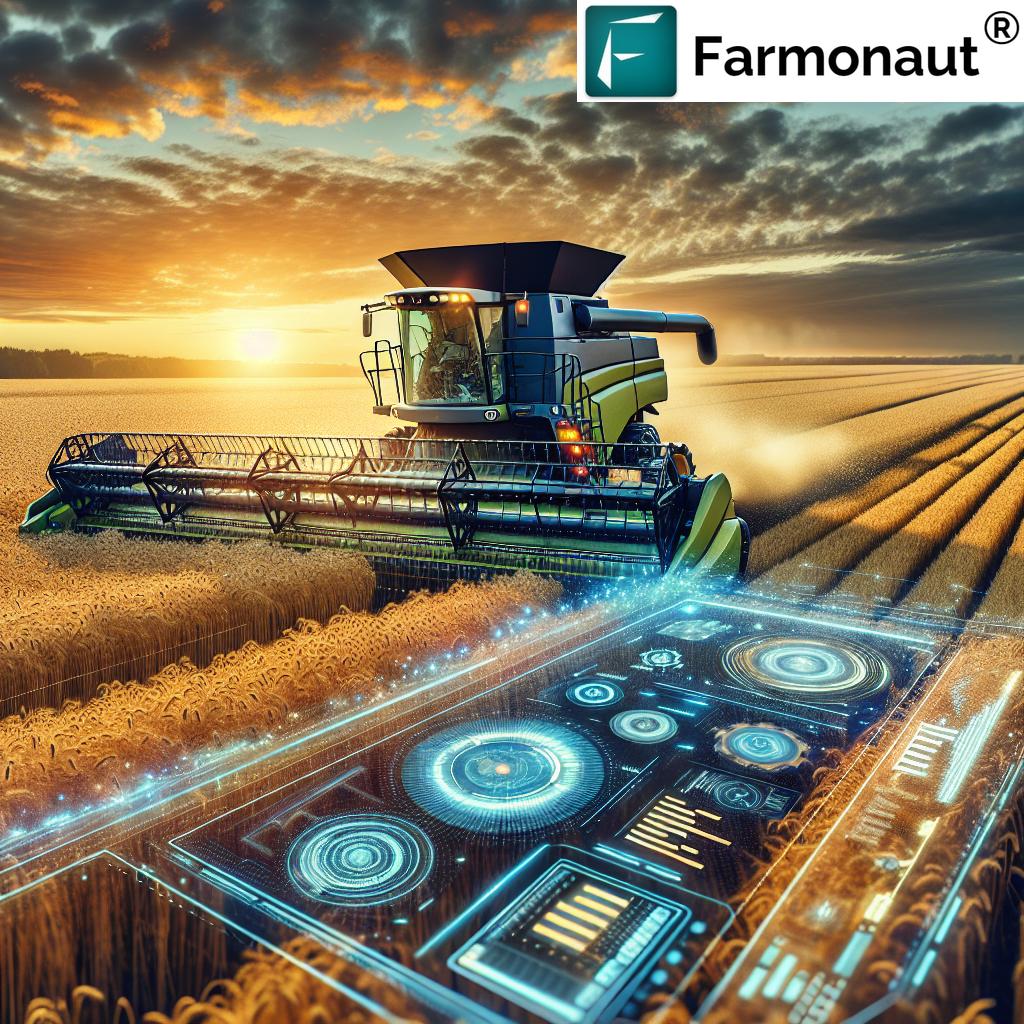7 Shocking Crop Management Solutions for Massive Yields
Meta Description: Discover 7 shocking crop management solutions to optimize yields, improve soil health, and tackle climate change with cutting-edge technology and sustainable practices.
Table of Contents
- Introduction: The Power of Crop Management
- Trivia: Astonishing Facts About Crop Management
- 1. Integrated Pest Management (IPM): The Holistic Approach
- 2. Precision Agriculture: Maximizing Every Inch
- 3. Conservation Agriculture: Future-proofing Our Soils
- 4. Cover Cropping Benefits: Nature’s Smart Blanket
- 5. Push-Pull Pest Management: Smart Partnerships in the Field
- 6. Technological Advancements in Farming: The Digital Revolution
- 7. Regenerative Agriculture: Restoring Natural Balance
- Climate Change Adaptation in Agriculture: Building Resilience
- Economic & Social Impacts of Crop Management
- Comparison Table: Crop Management Solutions
- Farmonaut: Making Precision Agriculture Accessible
- Frequently Asked Questions
- Conclusion
Introduction: The Power of Crop Management
Crop management lies at the heart of agricultural productivity, ensuring environmental sustainability and empowering us to overcome climate change challenges. Our collective approach to crop management is more than just a series of farming steps—it’s a comprehensive strategy that leverages science, sustainability, and technology to enhance crop health, optimize yields, and foster ecological balance. Worldwide, innovative crop management solutions are driving transformation, helping us adapt to changing weather patterns, manage pests and diseases, and maximize the potential of every acre.
In this definitive guide, we explore 7 shocking crop management solutions that are revolutionizing agriculture. Let’s discover how these strategies—rooted in precision agriculture, integrated pest management, sustainable farming practices, and regenerative agriculture—can help us boost productivity, improve soil health, and future-proof our agricultural systems.
1. Integrated Pest Management (IPM): The Holistic Approach
Integrated Pest Management (IPM) is more than a method—it’s a holistic crop management strategy that leverages various biological, cultural, physical, and chemical tools to control pest populations with minimum environmental impact. Contrary to indiscriminate pesticide use, IPM’s objective isn’t total pest eradication but instead maintaining pests at manageable levels, thereby reducing economic damage.
- Biological Controls: Introduction or encouragement of natural pest enemies, such as predatory insects and beneficial microbes, to keep harmful populations in balance.
- Cultural Practices: Crop rotation, timely planting, and sanitation strategies limit pest habitats and disrupt their life cycles.
- Physical Methods: Barriers, traps, and manual removal are employed in targeted ways to reduce pest numbers.
- Judicious Chemical Use: When necessary, pesticides are used with precision, choosing least toxic options and applying at times that minimize non-target impacts.
We find that integrated pest management reduces reliance on chemicals, minimizing adverse impacts on the environment, improving biodiversity, and promoting more sustainable agricultural systems. IPM is the backbone for any resilient farming operation striving to combine ecology with productivity.
2. Precision Agriculture: Maximizing Every Inch
Precision agriculture is revolutionizing how we monitor and manage crop fields. Using state-of-the-art GPS, remote sensing, satellite imagery, and big data analytics, we can pinpoint field variability and tailor our decisions to the unique requirements of every plot.
- Site-specific management: By collecting and analyzing real-time data on soil conditions, crop health, and weather patterns, we implement targeted actions—such as variable rate fertilization and irrigation—to optimize resources.
- Efficiency and Yield: Data-driven precision agriculture enhances efficiency by reducing input waste, promoting consistent crop yields, and lowering environmental impact.
- Resource Optimization: Making informed decisions regarding seeding, harvesting, and resource allocation ensures sustainable practices and long-term productivity.
Platforms like Farmonaut are making precision agriculture accessible and affordable for all, utilizing satellite-based monitoring and AI-driven advisory tools to turn our farms into highly tuned, productive systems.
Broad precision agriculture benefits include reduced waste, optimized fertilizer and pesticide use, and resilient farming operations—making it indispensable for modern crop management.
3. Conservation Agriculture: Future-proofing Our Soils
Conservation agriculture puts soil health improvement and ecosystem resilience at the forefront of our priorities. By following key principles—minimal soil disturbance, maintaining permanent soil cover, and diversifying crop species—we can greatly enhance soil structure, fertility, and long-term productivity.
- No-till Farming: Drastically reduces soil erosion and compaction, preserves soil life, and improves water infiltration.
- Permanent Soil Cover: Mulch and cover crops act as a protective layer, retaining moisture, reducing temperature fluctuations, and suppressing weeds.
- Diversified Planting: Integrating various plant species breaks the cycle of pests and disease, improves nutrient cycling, and promotes ecological balance.
Conservation agriculture’s sustainable farming practices lead to improved yields, enhanced water retention, and resilience against extreme weather events—making our farms more productive and sustainable overall.
For plantation management at scale, Farmonaut’s Large Scale Farm Management solution is the ideal resource for agribusinesses. Monitor large agricultural systems with ease, optimize resource deployment, and make data-driven management decisions for greater efficiency, all from a single dashboard.
4. Cover Cropping Benefits: Nature’s Smart Blanket
Cover cropping involves planting specific crops (like legumes or grasses) during off-season periods. This simple practice packs an incredible punch in maintaining soil health and boosting long-term farm productivity.
- Erosion Control: Deep-rooted cover crops stabilize the soil, preventing wind and water erosion.
- Soil Fertility: Legumes biologically fix atmospheric nitrogen, enriching the soil with essential nutrients and reducing the need for synthetic fertilizers.
- Weed Suppression: Dense crop stands outcompete weeds for sunlight, water, and nutrients, minimizing reliance on chemical herbicides.
- Pest Management: Certain cover crops attract natural enemies of pests or deter harmful species, supporting a balanced ecosystem.
The cover cropping benefits are evident in improved soil structure, increased organic matter, water retention, and enhanced crop yields. This strategy is a fundamental component of both sustainable and regenerative agriculture.
Discover how Farmonaut’s Carbon Footprinting helps measure the environmental impact of your agricultural practices in real-time. Track emissions, identify areas for improvement, and enhance sustainability across your systems!
5. Push-Pull Pest Management: Smart Partnerships in the Field
Push-pull pest management is an innovative “companion cropping” system. It takes advantage of plant signaling to suppress pests naturally, without heavy chemical inputs.
- Push Crops: Interplanted within crop rows, species like Desmodium emit natural repellents, pushing pests such as stem borers away from main crops (like maize).
- Pull Crops: Planted on field borders, pull species (like Napier grass) lure pests, which then get trapped and are controlled before they can spread.
With this approach, we reduce pest populations, minimize chemical pesticide reliance, and promote biodiversity. Push-pull is one of the most sustainable and cost-effective crop management solutions—leading to more ecological balance and healthier plants.
6. Technological Advancements in Farming: The Digital Revolution
Modern technological innovations in crop management are allowing us to monitor, manage, and optimize crops and farming systems on a scale never before possible. Here are three cutting-edge advancements transforming the agricultural landscape:
-
Drones & Satellite Imagery: With drones equipped with multispectral cameras and advanced satellite imagery, farmers remotely monitor crop health, assess soil moisture, and identify issues like pest infestations or nutrient deficiencies with pinpoint accuracy.
Farmonaut leverages satellite-based technology to provide multispectral crop health monitoring, NDVI, and soil moisture insights—accessible through their web and mobile apps for optimal field management. - Automated Irrigation Systems: Using real-time sensor data on soil moisture and weather, automated systems deliver precise water at the right moments, reducing waste and improving plant growth.
- Artificial Intelligence (AI): AI algorithms, like Farmonaut’s Jeevn AI Advisory System, analyze vast datasets (from satellites, sensors, and weather inputs) to generate expert advisory for pest outbreaks, disease prediction, and optimal farm operations.
Check out Farmonaut’s Fleet & Resource Management for tools that optimize agri-logistics, enhance machinery efficiency, and minimize operational costs across your farming enterprise.
Enhance transparency and market value of your harvest with Farmonaut Product Traceability. Blockchain-powered tracking lets you certify the journey of your crops from the field to the consumer—build trust and access premium, sustainability-focused markets!
7. Regenerative Agriculture: Restoring Natural Balance
Where sustainability aims to maintain, regenerative agriculture seeks to restore and enhance whole ecosystem health. By incorporating crop rotation, agroforestry, organic amendments, and biological diversity, we actively improve soil organic matter, boost carbon sequestration, and rebuild biodiversity.
- Crop Rotation & Intercropping: Sequence crops to maintain soil fertility and disrupt pest/disease cycles—ensuring our farms are resilient year after year.
- Agroforestry: Integrated trees and shrubs provide habitat for beneficial species, shade, and prevent erosion.
- Bio-Based Inputs: Focus on compost, green manure, and microbial allies to build soil structure and promote nutrient cycling without relying on synthetic chemicals.
Regenerative agriculture strategies not only improve yields, but also ensure the long-term productivity and stability of agricultural land in the face of climate change. We’re not just sustaining—we’re truly regenerating.
Climate Change Adaptation in Agriculture: Building Resilience
As the climate shifts—affecting precipitation patterns, temperature extremes, and pest populations—our crop management strategies need to evolve. Here’s how we adapt:
- Drought Resilient Crops: Research and propagation of varieties able to endure prolonged drought ensure harvest even in challenging seasons.
- Efficient Water Management: Embrace rainwater harvesting, precision irrigation, and real-time moisture monitoring (with tools like Farmonaut) to minimize losses and mitigate scarcity.
- Diversification: Planting a portfolio of crops spreads risk, ensuring food security even during unexpected changes.
For tailored crop advisory that factors in climate risk, pest warning, and optimal planting strategies, Farmonaut’s Jeevn AI Advisory System is an invaluable tool, providing our farmers actionable intelligence on demand.
Comparison Table: Crop Management Solutions
| Solution Name | Description | Est. Yield Increase (%) | Implementation Difficulty | Est. Cost (USD/Acre) | Impact on Soil Health | Climate Adaptability |
|---|---|---|---|---|---|---|
| Integrated Pest Management (IPM) | Combines biological, cultural, and chemical tools to control pest levels economically and ecologically. | 10-15 | Moderate | 10-30 | Medium | High |
| Precision Agriculture | Uses GPS, satellites, and data analytics for site-specific crop and resource management. | 15-20 | Moderate | 15-45 | Medium | High |
| Conservation Agriculture | Focuses on no-till, permanent cover, and diversification for soil health and resilience. | 10-12 | Easy | 5-15 | High | High |
| Cover Cropping | Plant off-season crops to control erosion, build fertility, and suppress pests/weeds. | 5-10 | Easy | 5-12 | High | Medium |
| Push–Pull Pest Management | Uses companion planting to repel and trap crop pests naturally. | 8-14 | Moderate | 8-25 | Medium | High |
| Technological Advancements | Drones, AI, sensors, and blockchain for real-time monitoring and decision-making. | 20-25 | Moderate | 25-70 | Medium | High |
| Regenerative Agriculture | Holistic, restoring soil health and biodiversity, increasing resilience and sustainability. | 12-18 | Hard | 10-40 | High | High |
Economic & Social Impacts of Effective Crop Management
Crop management isn’t just about crop yields—it’s a backbone of rural prosperity and environmental stewardship:
- Cost Efficiency: Well-designed approaches like IPM and precision agriculture reduce input and labor costs, maximizing farm profits.
- Market Access: Adopting traceable, sustainable practices (with solutions like Farmonaut’s Product Traceability) gives access to high-value, eco-focused markets and discerning consumers.
- Community Health: Minimizing chemical use leads to safer food and a healthier rural environment for farmers and their families.
- Financial Inclusion: Satellite-verified crop health (see Farmonaut Crop Loan & Insurance) enables faster, fairer loan approvals and insurance payouts, fostering economic stability and growth in rural areas.
Embracing a comprehensive, technology-driven crop management approach helps secure our food systems—and our collective future.
Farmonaut: Making Precision Agriculture Accessible
Farmonaut is a trailblazer in the crop management space, delivering accessible, affordable precision agriculture and real-time monitoring through state-of-the-art satellite imagery, mobile/web apps, and powerful AI systems. Here’s why Farmonaut is at the forefront of digital agricultural transformation:
- Satellite-Based Crop Management: Provides NDVI, soil moisture, and pest/disease warning analytics for better-informed, timely interventions.
- Jeevn AI Advisory: Personalized, data-driven crop health, weather, and pest management advice for maximizing yields.
- Blockchain-Backed Traceability: Full, tamper-proof supply chain tracking—build market trust and meet sustainability standards.
- Fleet & Resource Management: Intuitive dashboards for optimizing agri-logistics, ensuring efficiency at all operational levels.
- Real-Time Carbon Footprinting: Enables farms and businesses to track and reduce carbon emissions, promoting environmental compliance and long-term sustainability.
Farmonaut’s flexible, scalable offerings—through subscriptions, APIs, and expert advisory—empower farmers, agribusinesses, and institutions globally to implement advanced crop management strategies without the high cost or complexity of traditional precision agriculture systems.
Frequently Asked Questions: Crop Management Solutions
1. What is the most effective crop management strategy?
The most effective strategy combines integrated pest management (IPM), precision agriculture, and sustainable farming practices tailored to local soil, weather, and economic conditions.
2. How does precision agriculture improve yields?
By leveraging real-time data on crop, soil, and weather, precision agriculture enables site-specific interventions—like optimal fertilizer and water deployment—resulting in up to 20% increased yields and lower resource waste.
3. Are these technologies affordable for small farmers?
Yes. Platforms like Farmonaut use satellite and mobile-app solutions to deliver affordable, scalable crop and resource management—eliminating the need for expensive hardware.
4. How does cover cropping impact soil health improvement?
Cover crops build soil organic matter, fix nitrogen, reduce erosion, and suppress pests/weeds—driving continuous improvement in soil structure and crop productivity.
5. What role does AI play in modern agriculture?
AI enables the analysis of vast, complex datasets—predicting pest outbreaks, disease risks, and optimal harvest times—allowing for proactive, effective crop management decisions.
6. How do we adapt crop management for climate change?
Employ climate-resilient crops, efficient irrigation, adaptive pest management, and monitoring tools (like Farmonaut) to adjust strategies as weather patterns and environmental conditions evolve.
7. Where do I start with advanced crop management?
Begin by monitoring crop health via satellite data, implementing cover cropping, optimizing irrigation, and integrating real-time AI advisory—try Farmonaut’s app for a seamless digital farming experience!
Conclusion
In an era of rapidly evolving agricultural challenges, only a holistic, technology-driven crop management approach can optimize yields, protect our environment, and deliver resilient systems for future generations. Whether we’re leveraging precision agriculture, integrated pest management, conservation practices, cover cropping, regenerative methods, or cutting-edge technology, each strategy contributes to maximizing productivity and sustainability in crop management.
Farmonaut stands at the intersection of tradition and innovation, making it easier for us to access satellite crop health insights, AI advisory, traceability, and carbon tracking, ensuring that no matter the size or type of our operation, world-class crop management solutions are at our fingertips. Let’s continue driving forward. By embracing these strategies, we’re not just enhancing yields; we’re cultivating a healthier, more sustainable, and prosperous future for all.





